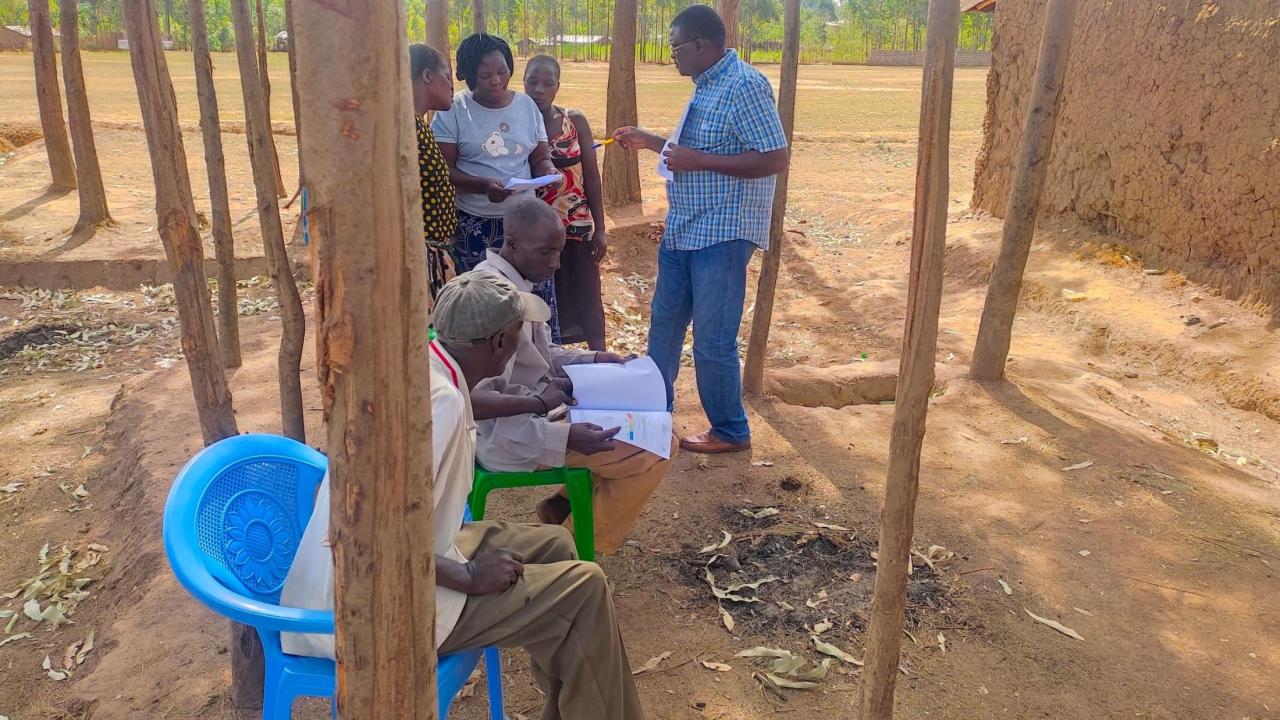
Low Willingness to Pay for Soil Tests Limits Lime Potential
In Kenya, yields of maize, the main staple crop, have stagnated and are lower than yields in neighboring countries. Notably, this stagnation is occurring amid increased fertilizer use. Soil acidity is known to be one of the major contributors. Acidic soils decrease plant uptake of essential nutrients and can nullify the impact of fertilizer.
Agricultural lime – so named as it can be made from pulverized limestone – is an effective remedy, as it neutralizes the pH of the soil. Lime has been shown to dramatically increase maize yields on acidic soils in Kenya.[1] Yet, adoption of lime has been minimal.
ALL-IN PI, John Olwande of the Tegemeo Institute at Nairobi’s Egerton University, is studying how to catalyze lime adoption through soil testing. He explains, “Farmers often do not appreciate the need for soil testing and/or do not have access to soil testing services and make soil management decisions without accurate knowledge about the needs of the soil.” His hypothesis is that if farmers learn through soil tests that their land is acidic, and they learn about application of lime to enhance nutrient uptake, then they will apply lime.
The Necessity of Soil Testing
The first step is getting more farmers testing their soil. Only 11% farmers surveyed by Olwande’s team had ever had their soil tested. Ideally, farmers would test their soil every three years.
Olwande’s team recently conducted a Willingness to Pay survey among farmers to understand how much money farmers are currently willing to spend on soil testing. The results indicate a substantial gap: for soil testing, only 20% of surveyed farmers indicated willingness to pay KES 1,350 ($10.2), the cost of the cheapest (unsubsidized) soil test found on the market. (For context, maize seed for 1 hectare costs around KES 1,800 ($13.5)). In order to capture 90% of farmers, soil tests would have to cost under KES 500 ($3.8).
A similar willingness to pay issue may exist with the lime itself. On average, households’ sampled willingness to pay for a bag of agricultural lime was below the retail price.
Though these results seem to present a conundrum, Olwande notes that farmers might adjust their willingness to pay in the future if they see more value in the soil tests and lime. Previous measures of the impact of liming acidic maize fields in western Kenya found that application of lime at 4 tons/hectare increased yields fivefold, realizing a benefit cost ratio of 95.[2]
Intention and Opportunity
While collecting willingness to pay data, the research team collected soil samples from 657 farms in the project area for testing (some for free in some area, and some among farmers who were willing to pay). Among the samples, 60% had pH below 5.5, which is the critical level for maize growth. It was the first time that the farmers received pH levels for their soil, as well as recommendations about lime and fertilizer application. Many of the farmers with low pH expressed an intention to apply agricultural lime. The research team is currently collecting follow-up data from the farmers and plans to do another survey round in early 2025 to find out if the farmers implemented the recommendations.
Olwande hopes that making soil testing services and agricultural lime widely available and affordable for farmers becomes a priority in Kenya. He comments, “The recent African Union’s Nairobi Declaration of Fertilizer and Soil Health presents an opportunity for public, private and civil society stakeholders in Kenya’s agriculture to align their support towards activities that encourage soil health investments by smallholder farmers. The outcome of this research will provide valuable information to strategies to encourage soil testing and application of lime and site-specific fertilizer recommendations.”
[1] Esilaba, A.O., Kamau, D.M., Mangale, N, Muriuki, A., Kathuku-Gitonga, A.An, Kibunja, C., Mbakaya, D., and Zingore, S., "Overcoming Soil Acidity Constraints Through Liming and Other Soil Amendments in Kenya."
https://ifdc.org/wp-content/uploads/2018/10/1.3.Anthony-Esilaba_KALRO-IFDC-MOAI-SOIL-ACIDITY-AND-LIMING-IN-KENYA-PRESENTATION-FINAL-AOE-121018.pdf
[2] Ibid.
